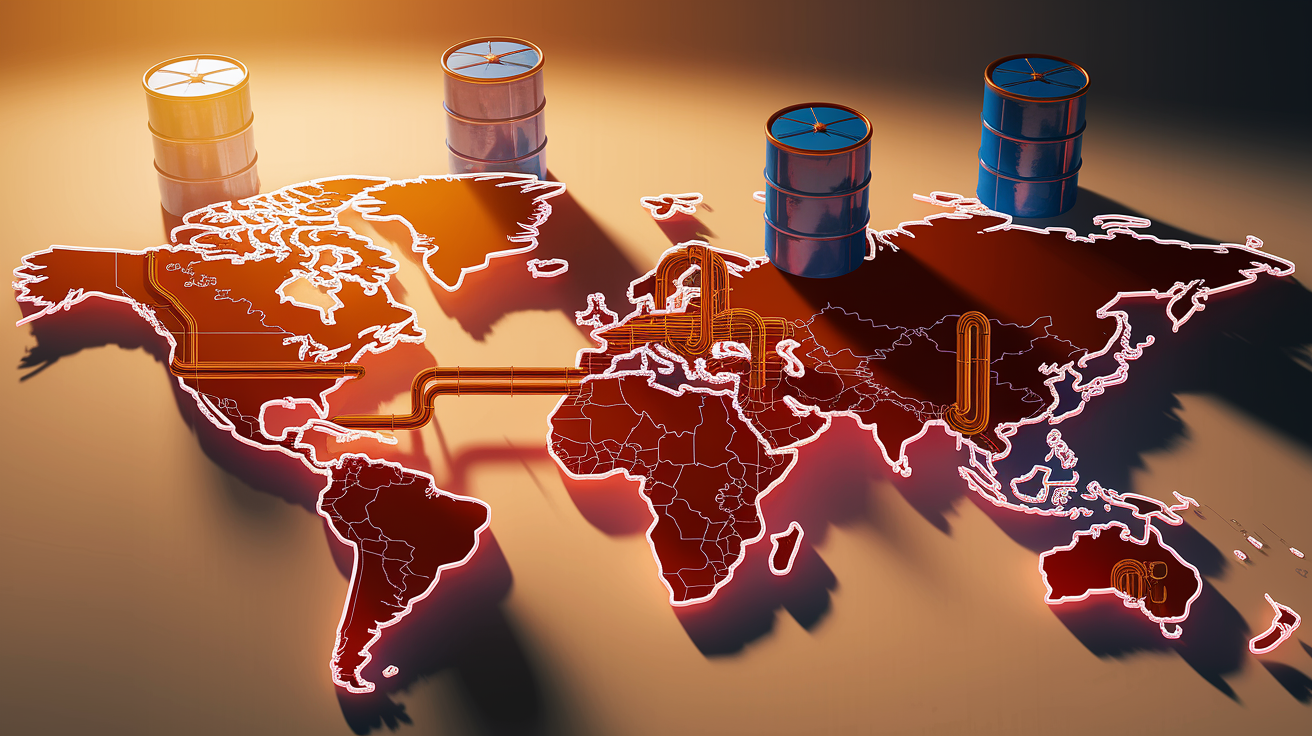In the dynamic world of energy commodities, the prices of oil and natural gas are subject to continuous fluctuations. Geopolitical tensions and conflicts act on these markets like invisible puppeteers, pulling the strings. While investors and private savers seek stability, the complex interrelations behind price movements become apparent. This analysis highlights the essential factors influencing the prices of oil and natural gas, showing how the war in Ukraine acts as a catalyst for new market conditions.
Oil and Natural Gas under Geopolitical Pressure: A Comprehensive Analysis

The determination of global oil and natural gas prices is strongly influenced by geopolitical tensions, leading to volatile price fluctuations. This volatility is fueled by a multitude of factors, ranging from OPEC production to international conflicts.
Oil: Geopolitical Factors as Price Drivers
The price of oil is significantly influenced by the production decisions of the Organization of the Petroleum Exporting Countries (OPEC). Currently, the price of Brent crude oil hovers around 71 USD per barrel. The war in Ukraine and ongoing tensions in the Middle East have further destabilized the markets. Sanctions against Russia, one of the major oil producers, have disrupted supply chains and pushed prices higher. These tensions may lead to an increased demand for alternative energy sources.
The future presents a mixed picture: on the one hand, OPEC forecasts continued demand growth; on the other, political decisions, particularly from the United States, which place greater emphasis on sustainable energy sources, could impact the market. Experts predict that oil prices could drop to 74.2 USD in 2025 and to 68.5 USD in 2026, depending on stability in geopolitical crisis points.
Natural Gas: A Dominant Market Dependency
Similar to oil, the price of natural gas is also subject to significant political influences. In Germany, the average price of gas is currently around 11.77 cents per kilowatt-hour, a decrease from the peaks of 2022. This price evolution is primarily determined by the war in Ukraine. The reduction in Russian gas supplies has tested European energy security, increasing dependence on liquefied natural gas (LNG) imports from the United States and Qatar.
While Europe seeks to diversify its energy base, the geopolitical situation remains tense. Price forecasts suggest that wholesale prices for natural gas in 2025 could settle around 51 euros per megawatt hour, with a further decline to 41 euros in 2026. These forecasts assume that no new geopolitical crises arise that could further jeopardize supply.
Conclusion: Common Challenges and Strategic Adjustments
Both energy sectors are highly influenced by geopolitical events. The need to diversify energy sources and strengthen multilateral cooperation is crucial for ensuring energy stability. A fragmentation of the international order could further exacerbate existing volatility and lead to greater price fluctuations. However, an effective geopolitical strategy and a global energy policy could establish a more stable future for global energy markets.
The Geopolitical Game: Impacts of the War in Ukraine on Energy Costs

The war in Ukraine has drastically altered the determination of oil and natural gas prices, presenting the global energy market with unprecedented challenges. Since its outbreak, consumers worldwide have faced rising prices, well beyond the usual market volatility. Changes in policies and economic structures are profound and require a deeper understanding of the essential influencing factors.
The conflict has significantly inflated oil prices, as the security of global supply has been called into question. The uncertainty generated by the conflict has led to an unpredictable surge in oil prices, while embargo measures against Russian petroleum products have interrupted import flows to Europe. In Germany, these changes have led to an increased reliance on alternative suppliers, influencing price determination and decoupling from usual market prices.
Meanwhile, the natural gas market has also experienced significant turbulence. The drastic reduction in Russian gas supplies has forced Europe to focus on liquefied natural gas (LNG), which has driven up demand and global prices for LNG. This has aggravated not only the energy security situation but also had profound effects on heating costs for consumers in Europe. The shift to LNG and the change in supply sources have represented strategic and infrastructural challenges that needed to be urgently addressed.
Now, the entire energy sector faces significant geopolitical tensions and a future marked by uncertainty. Measures to cushion energy costs, such as the fuel rebate introduced in Germany, underscore governments’ attempts to alleviate the economic burden. However, the long-term question remains: how will the energy market be sustainably stabilized in a context dominated by geostrategic interests? The geopolitical game generated by the war in Ukraine forces political actors to develop new alliances and strategies to address not only current challenges but also to avert future conflicts. By adopting these measures, not only is the short-term security of supply ensured, but a foundation is also laid for a more stable and diversified energy future.